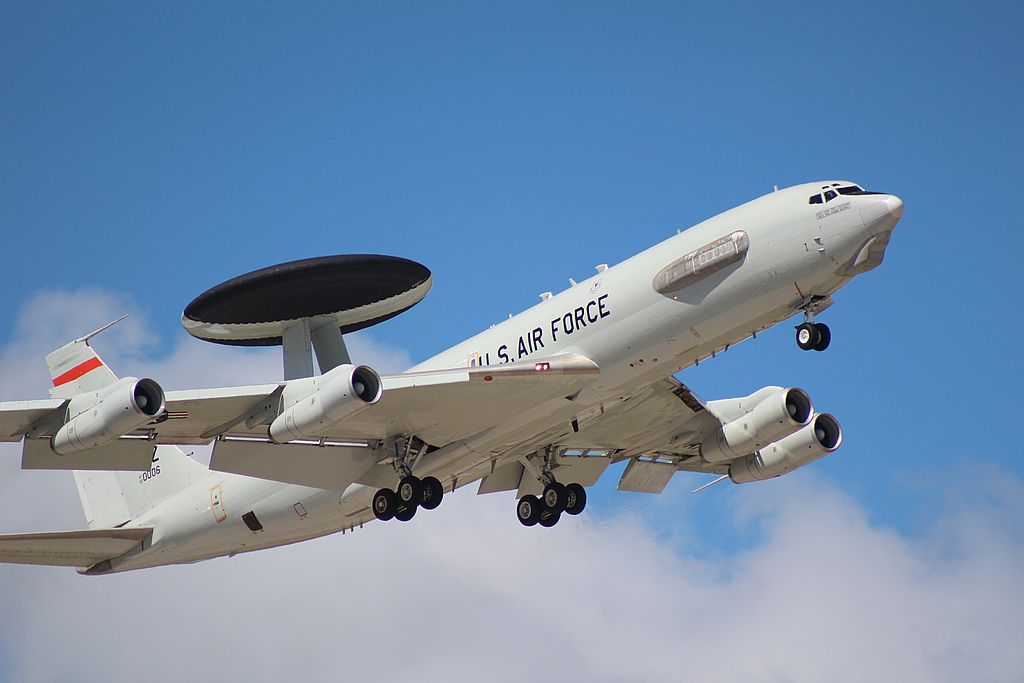
SHAH ALAM: Cope Taufan 16 – the biennial air combat exercise between the RMAF and USAF – will kick off on Monday at the Butterworth and Subang airbases. The announcement of the exercise from July 18 to 29 was made by the US Pacific Command in a press release yesterday.
Unlike the last Cope Taufan, where the F-22 Raptors took part alongside F15s, only F-16s and F-15s, both from units based in Japan will participate in this year’s exercise.
However this time around an E-3C AWACS aircraft will be involved in the exercise, which is the first I believed for Cope Taufan series.
RMAF as usual as has not said anything about the exercise. We can assume the Hawks and Hornets based in Butterworth will be involved in the exercise. As for the Fulcrums and Flankers we will have to wait and see.
For plane spotters, the best location to take pictures of the fighters will be at Butterworth while the AWACs and transports at Subang. Its likely though the C-17s will go to Butterworth as well to send equipment and personnel.
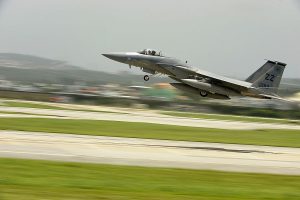
The release from PACOM:
“JOINT BASE PEARL HARBOR-HICKAM, Hawaii — The U.S. Air Force and the Royal Malaysian Air Force will participate in exercise Cope Taufan 16, July 18-29, at Pangkalan Udara Butterworth and Pangkalan Udara Subang, Malaysia.
Cope Taufan 16 provides an excellent opportunity to improve combined readiness and inter-operability between the U.S. and Malaysia. This large force employment exercise will include operations in air superiority, airborne command and control, close air support, interdiction, air refueling and tactical airlift and air drop.
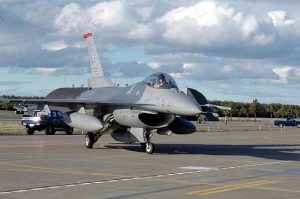
The U.S. is committed to strengthening partnerships with Malaysia and is honored to participate in this year’s event. The following U.S. Air Force units and aircraft are participating in Cope Taufan 16:
– 517th Airlift Squadron, 3rd Wing, Joint Base Elmendorf-Richardson, Alaska (C-17A)
– 535th Airlift Squadron, 15th Wing, Joint Base Pearl Harbor-Hickam, Hawaii (C-17A)
– 909th Air Refueling Squadron, 18th Wing, Kadena Air Base, Japan (KC-135)
-13th Air Expeditionary Group, PACAF, Joint Base Pearl Harbor-Hickam, Hawaii (CT16 Staff)
-13th Fighter Squadron, 35th Fighter Wing, Misawa Air Base, Japan (F-16CM/D)
– 961st Airborne Air Control Squadron, 18th Wing, Kadena Air Base, Japan (E-3C)
– 44th Fighter Squadron, 18th Wing, Kadena Air Base, Japan (F-15 C/D)
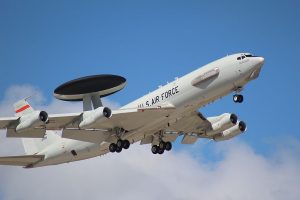
The exercise allows for an exchange of techniques and procedures to enhance inter-operability and cooperation between U.S. and Royal Malaysian airmen. It also provides a quality training venue for U.S. and Malaysian aircrew and maintenance personnel.
Pacific Air Forces has conducted exercises with the Royal Malaysian Air Force since the early 1980s. By participating in exercises with military forces from partner nations in the Indo-Asia-Pacific region, the U.S. demonstrates its commitment to peace and stability in the region.
— Malaysian Defence
If you like this post, buy me an espresso. Paypal Payment

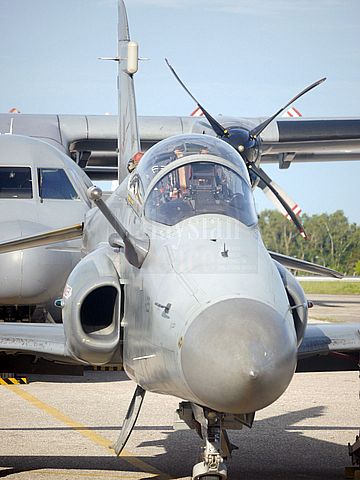
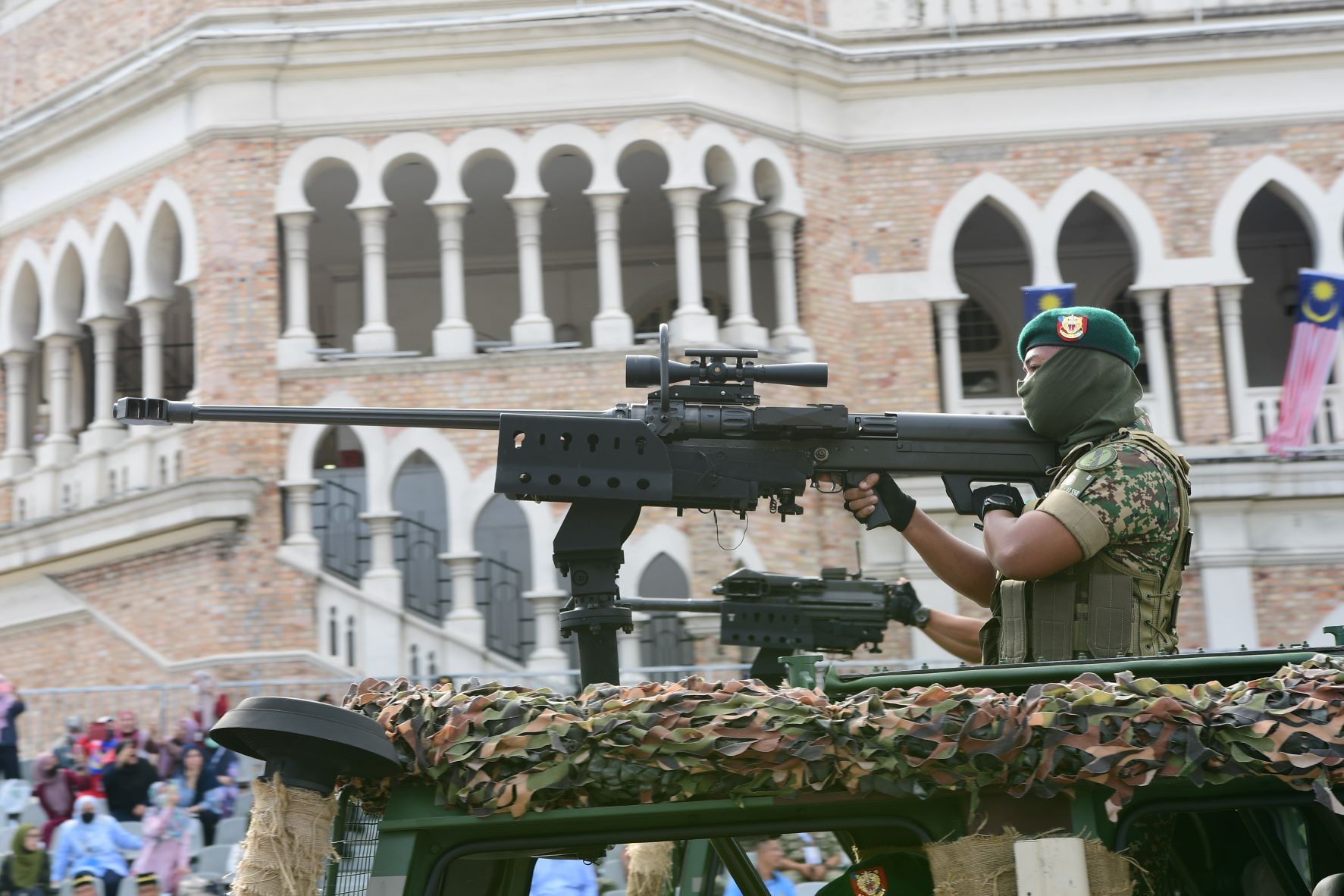
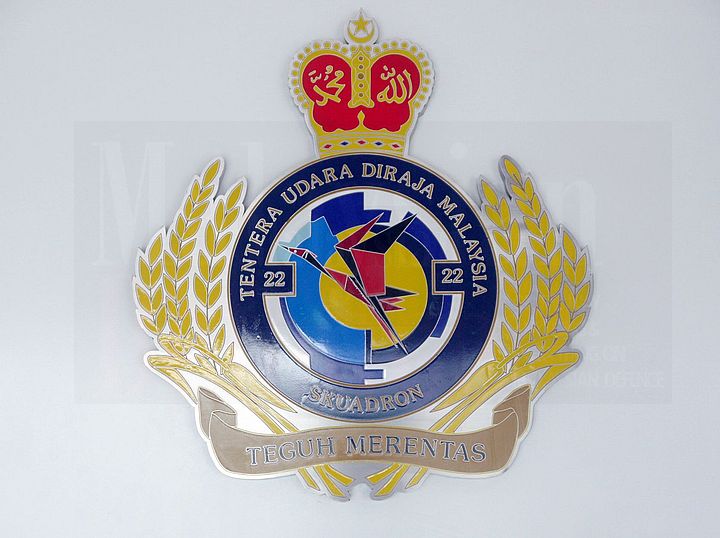
In the wake of China’s rejection of the UN-backed tribunal’s verdict on SCS, it will be interesting to know their respond to this exercise as anything involving uncle sam in this area definitely will trigger edginess on PLA forces there.
Reply
Cope Taufan is conducted over the peninsula and Straits of Malacca so its kosher even to China. Doing it over SCS especially in Sabah will be quite different though!
Possible for us to study and evaluate the e-3 AWACS? Though the price tag may turn us away but at least it a good idea on what the pointers to have an awacs. Though smaller one like globleeye might appeal more to us.
Reply
Yes it will be an opportunity for RMAF to learn about AWACs
So, its the guys from Kadena AB?
Reply
Kadena and Misawa ABs
AEW aircraft in the form of RAAF Wedgetails have already participated in FPDA exercises in Malaysia. If I’m not mistaken, an RAF E-3 has also been here : whether for an FPDA exercise or on transit, I’m not sure. In the past, when hosted from Singapore, FPDA exercises have also included the participation of RSAF E-2s but whether the E-2s had any ”interaction”with participating RMAF assets is unknown. During a visit to Singapore, when he was Defence Minister, Najib when on a flight aboard an E-2.
By now the RMAF will already have a pretty good idea as to how AEWs operate and the contribution they can offer; not only from exercising with AEWs during FPDA exercises but also from briefings by OEMs. It is often not realised that the RMAF first registered a requirement for 4 AEWs in the mid-1980’s :[
Reply
Yes RAAF Wedgetails taken part in FPDA exercise. Not sure about the E2 or Gulfstream of the RSAF.
Azlan,
The 1997 financial crisis kill thought i believe e-3 was one of the candidate for the program. No other plane have comparable capacilities during that period.
Now we can fit smaller system into business jet which make thing more compact and easier to maintain than a converted passenger jets but likewise white paper capabilities and range is cant match those like wedge tail or even modernize e3
Reply
The E-3 AFAIK was never in the mix for the RMAF AEW requirements, it was too expensive and was not cleared for export for many countries including Malaysia. It was the E-2 Hawkeyes were being considered. The Hawkeyes is still in the mix for the AEW requirement though its not an official slug=fest yet as RMAF had not called for one as it is not listed in RMK-11 goodie bag.
Wah, an E3? then OPFOR will have to be creative to beat a strike package with AWACS in control. Maybe RMAF return the favor with MKM joining th EX.
sim – ”but likewise white paper capabilities and range is cant match those like wedge tail or even modernize e3”
True but in line with our operational needs, do we need the capabilities offered by the likes of an E-3 or a Wedgetail, plus the range and endurance those platforms offer? Unlike Australia and the U.S., we don’t have far to go before we reach our operational areas and we are unlikely to be involved in a protracted high intensity conflict with a state actor. In addition to having the capability, operating and support costs are also a factor in what we eventually select.
nimitz – ”Wah, an E3?”
I would think the real significance is not the participation of an E-3 or even last year’s participation of F-22s but how we’ve been steadily increasing the level of defence cooperation with the U.S. Sure, we go all the way to be friendly with China, we are not a non NATO U.S. ally like Thailand, we don’t have a colonial like dependency like the Philippines [as a former U.S. colony and country with a very neglected military] does and unlike Singapore we don’t openly declare how close we are with Uncle Sam but the fact remains that of all the countries we have defence ties with; the most comprehensive is with the U.S.
Ironically, Mahathir was known to be very openly critical of U.S. policy but it was Mahathir who signed an agreement in 1984 [during a visit to the Pentagon] that enabled cross training and visits by U.S. ships. Despite all the criticism – he said that the invasion of Afghanistan would affect ordinary Afghans and wouldn’t totally eradicate terrorism [he was right here]; he said the invasion of Iraq would create a bigger mess [he was right here]; he accused the U.S. of being a bully and being hypocritical when it came to human rights and trade talks [a lot of truth here] and he spoke of how big powers manipulated the UN for their own needs [a lot of truth here] – he fully understood that it was in our national interests to have good defence relations with the U.S. Off course he also ensured that we didn’t get too tied down with any big power.
@ azlan
And dr. M was one of the earliest person to understand about the implications of eez to national sovereignty and secured most of the outermost islands like pulau perak in selat melaka, pulau layang2 and sipadan. He also signed a very important treaty with Indonesia enabling unrestricted aircraft and ship access from West and east malaysia through the natuna islands. The importance not seen by most at the time (as most dr. M decisions, he is a master chess player, which can see the future most people don’t see), but is something very important now.
Reply
It was not about foreign but mostly in preparation for domestic concerns. And anyhow it also make money for some people
Speaking of Training Exercise. Thought that if Nexter want offer Ceasar SPH to Malaysian Armed Forces so bad then Malaysian want the Artillery system on Handalan Chassis with 8×8 wheel. What do you think Marhalim?
Reply
Its the other way around. Nexter could do it but we need to pay for it first
Of course Marhalim. Why wouldn’t we? Beside….. Our Handalan is cheaper even we haven’t build 8×8 wheel Handalan yet but hope price isn’t expensive.
Reply
As the local agent for Tata, Deftech could always use the Tata 8X8 truck already used by the Indian Army.They could also used the Isuzu 6X6 chassis for the same purpose.
Any news on the surpuls M109 to plus any additional upgrade will be intstalled on those?
The KAWEST upgrade look good for those m106 but the again for surplus vehicle to be upgraded other than original spec (assuming A6 variant upgrade) seem pretty slim. No matter how u upgrade a proton wira, it still a wira in the end.
Reply
I dont expect major upgrades for the M109s, they will be refurbished and fitted with new (whether its really new is beyond me) radios compatible with the Army. I think that will be the extend of the upgrading.
Whether we buy pre-used M-109s that are partially upgraded or intensively upgraded is secondary. Of far more importance is how we put the artillery to use and how often artillery batteries get to train with the units they are intended to support. Having the most upgraded gun will count for nothing if the Royal Artillery Corps doesn’t make some fundamentals changes and improvements in doctrine and organisation. At the moment the only unit in the army with an organic UAV capability is the Royal Intelligence Corps. The next to have such a capability should be the Royal Artillery Corps.
Ideally whatever new 155mm gun we buy will be in one regiment and will not be distributed in penny packets around the country. If we do buy the M-109s or anything else; perhaps the G-5s can go to Sabah [not because of threats in ESSCOM but as part of moves to improve our ability to deal with external state threats]. The problem here is that there is no range in East Malaysia to enable live 155mm firings.
That’s what i hope for Marhalim but i prefer 8×8 wheel. Thought that the Deftech still want to use Isuzu truck but the engine will be Tata just like they unveiled Handalan III 4 years ago at DSA 2012. Who knows? many nation want 8×8 truck for their Artillery system like French Nexter their new variant Caesar 8×8. If i was a Ministry of Defense sure i choose the Caesar 8×8 over the because 6×6 kinda has been use to many country so yeah. Or maybe i choose the Artillery System for the Handalan 8×8 Chassis(if they develop this) i’ll buy it.
Reply
Please note that the standard Caesar is on 6X6 chassis either the Renault or Mercedes. Nexter has presented a Caesar on a 8X8 truck. The 6X6 chassis was chosen as it offers mobility which is the Caesar main selling point
Giat [followed by Nexter] tried to push Caeser to us using the selling points that it’s cheaper to buy and operate than a wheeled SPH, has a smaller footprint than a wheeled SPH, unlike a towed piece offers mobility and can be flown by a C-130. The last point was seen as vital given we wanted the capability to rapidly reinforce East Malaysia in case of an emergency. True, it can be flown by a C-130 or a A400M but my main gripe with this is that it will take many sorties to fly in a regiment’s worth of guns, plus crew and ammo; which is fine on paper but in reality only doable if sufficient planes are available or operational for the tasking [same goes with air deployable AFVs].
Back in the early 2000’s Caeser appeared to have strong political pull but I’m uncertain if the army really had any serious interest in it. In fact I’m still unsure if the army at present has any interest in it.
Yes a wheeled SPH has better mobility [and offers crew some level of protection against shrapnel/fragments] but in our operational context; where much of any future conflict will take place near urban centres that are linked by paved roads or in areas where there are dirt roads; is a tracked solution really needed for the better off road mobility it offers?
Do we actually foresee a scenario where tank and mechanised units will be be moving/maneuvering rapidly over rough terrain and will need a tracked SPH to keep up with them? Given the narrow [narrow due to geography and compared to places in Europe or the Middle East] frontages units will operate on; can a wheeled or even a towed piece still provide indirect fire support to units without being able to physically keep pace with the units being supported? Or are we operating on the premise that any state actor we face has or will have the ability to direct effective and rapid counter battery fire, thus we need something mobile; irrespective of tracked or wheeled?
Azlan,
I believe the change is gradual. What the royal artillery corp should first be doing familizing with the equipments in this case m109. Know what the plus and minus points would make better doctrine and method of engagements.
Then only we can further evaluate if in future should we go for tracked or wheeled. But given the bean counters style, what would happen is that they will force the arty corp to get more surplus m109 and offer better upgrade only.
M109 is a dated design.. despite many upgrade option, it in end still a 50s design vehicle
Just an opinion. Yes the M109 is dated design but there are good upgrades out there. Like the one by dutch and german rheinmetall upgrade program. The upgrades uses the same turret and howitzer from the pzh 2000 if im not wrong. M109L52 the name. Seems like better from the m109a6.
For either wheeled or tracked is better, i think its like comparing our adnan to gempita. To have both types will complement each other. Yes the operating cost will be high if we use both. And idk what doctrine that our army needs.
In more economical view, just buy more m109 and upgrades those to m109l52 maybe. Focus on one type for ease of maintenance, supply and training.
Just my sekupang.
sifi – ” What the royal artillery corp should first be doing familizing with the equipments in this case m109”
No …. We first have to improve the way we go about doing things; if we don’t, it won’t matter what gun we buy. We are lucky in that the Royal Artillery Corps has never faced an enemy which could also hit back with artillery. We have also never faced an actual scenario in which the Royal Artillery Corps had to mass fire in order to provide indirect support to troops in the field and also coordinate its fire missions with units in the field who are constantly moving – this stuff comes easy for certain armies as they have been doing it for a long time but our army hasn’t been doing it for a long time thus this is new for us. Also, there is no point having upgraded M-109s if we can’t hit targets on time, no point having base bleed if we can’t acquire targets at certain ranges, no point having a new 155mm piece if artillery batteries don’t have enough practice with the units they are intended to support.
All these things take time, lots of practice and cash to do. Change indeed is gradual but first there must be a will to change and to adopt new ideas more relevant compared to previous ways of doing things. Most armies have a hard time changing given that they have been doing the same things for a long time. It’s frightening : if an army like the U.S. army [with all the resources it has] has failed miserably adopting to the changes needed to shed some of it’s ”big army” mentality [see the writings and videos of John Nagl], in order to adopt the needed mindset and doctrine needed for counter insurgency or non state, non high intensity threats; what chance does our army have to adopt to the needed change? How do we rate it as a learning organisation?
Note that despite the 2nd Emergency having ended more than 2 1/2 decades ago and the focus on ”conventionalisation” the army is still led by a top brass who spent a large part of their careers in a counterinsurgency orientated army and the army as a whole still has a counter insurgency mindset. Nothing wrong here as many lessons from the 2nd Emergency are still relevant. The problem is that in any future war likely to be fought [either against state or non state actors] the circumstances will be very different compared to the 2nd Emergency and future opponents not only will be equipped differently compared to Chin Peng’s goons but will also operate differently.
sifi – ”Then only we can further evaluate if in future should we go for tracked or wheeled.”
What gun we buy is driven by operating requirements and threat perceptions. We first have to have some idea as to what we foresee our guns doing and in what circumstances before we buy the gun; not the other way around.
sifi – ”M109 is a dated design.. despite many upgrade option, it in end still a 50s design vehicle”
If you want to use that argument, one can also say that the still widely used MAG 57 [referred generically as the GPMG] was first designed in the 1950’s, the widely used M2 HMG was first designed before WW2, the Adnan is based on the M-113 which was designed in the 1950’s and the F-15E is based on a platform first designed in the 1970’s. The key difference is how we employ a particular weapon and the doctrine we write to enable the weapon to be used in conjunction with other assets; not how dated the design is. It is commonly agreed by most that even if the Iraqi army in 1991 was equipped exclusively with Western equipment; the end would still have been the same : total defeat at the hands of a mainly Western coalition. It’s not the weapon that counts but how competent an army is at the tactical and operational level.
Nihd – ”For either wheeled or tracked is better, i think its like comparing our adnan to gempita. ”
I get the point you’re trying to make but there is a slight difference here. The Adnan and Gempita no doubt complement in each other but are also intended to be used in different scenarios, in different operational circumstances and operated by slightly different units.
It is interesting that Australia sees no need for a tracked SPH, as does South Africa. It’s also interesting that most Tier 1 NATO armies [with the exception of France with sees the need for an expeditionary role in Africa] have no need or a wheeled SPH.
We do need the number tho. Since FH-70 has been taken out of service, we need a replacement for it
dundun,
On paper, the 12 FH-70s were replaced, by 28 G-5s. On the subject of numbers the question is really whether long term plans call for the reducing of the number of Model 56 equipped Close Support Regiments with 155mm equipped regiments? For that matter, what are the plans of the Artillery Directorate with regards to 105mm guns? Do we intend on still having 105mm guns or do we intend to gradually go for an all 155mm Royal Artillery Corps? No doubt 120mm mortars can do some of the stuff 105mm guns can but the fact remains that 120mm mortars can never totally replace 105mm guns. At the end of the day, our main problem is that we still have to have some level of conventional capability; whilst also being able to deal with the non state non conventional threats we are more likely to encounter.
Is it 28 or 22 as my last check with SIPRI showed only 22 G5 were ordered?
Marhalim
Out of my curiosity,what helicopter is choosed to go with the lcs ship?
Reply
None yet
kamal,
22 were first ordered, followed by an additional 6.
The exercise should have put our datalinked equipped type (Hornet) in stark relief to our non-equipped types (MKM and Hawk).
Equipping the MKM with a datalink is one thing, the degree of integration with the aircraft and weapons system is another. We won’t end up with something very integrated- it is not within our budget limitations nor what the supplier nations are prepared to help us with.
Air forces who operate such handicapped types in exercises (like India’s MKI’s at Red Flag) and in real taskings (Germany’s MiG-29s) know the problem well. For all the investments in MKIs and PAKFAs, it says something that India is pursuing a compatible type (Rafale).
Reply
I am not sure whether the Hornets datalink have been enabled. During the launch of the X-band satellite systems, the PAT said the Hornets will be fitted with data link soon. I believe our Hornets are fitted for but have not been paid for the datalink. From pictures of our Hornets compared to Swiss and Finish Hornets, it seemed we are missing a few dimples, the data link antennas….